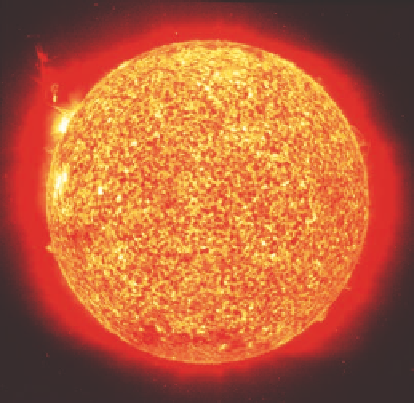Geoscience Reference
In-Depth Information
The Electromagnetic spectrum
To better visualize the various components of the electromag-
netic spectrum, view the animation
The Electromagnetic
Spectrum
. You will be able to interact with elements of the
electromagnetic spectrum by selecting different wavelengths,
such as those in the infrared and X-ray parts of the spectrum.
When you select a specific wavelength, an image will appear
that is representative of that part of the spectrum. In this way
you will develop a better feel for the electromagnetic spectrum,
how it is a pervasive part of Earth, and how geographers use it
to study the environment. Once you complete the interaction,
be sure to answer the questions at the end of the exercise to
test your understanding of this concept.
VISUAL CONCEPT CHECK
4.1
Although we take the Sun for granted, it is
by far the most important variable with re-
spect to life on Earth. How is solar energy
produced? What form does solar energy
take as it travels through space? How long
does this energy take to reach the Earth?
5.
The Sun produces electromagnetic energy at a gener-
ally constant rate over time. The amount of energy that
reaches the top of Earth's atmosphere is known as the
solar constant.
KEY CONCEPTS TO REMEMBER ABOUT
THE ELECTROMAGNETIC SPECTRUM
AND SOLAR ENERGY
1.
The Sun produces energy that radiates to Earth as vari-
ous sizes of electromagnetic waves.
Composition of the Atmosphere
2.
The electromagnetic spectrum is the total wavelength
range of electromagnetic energy.
Before examining how solar radiation interacts with the at-
mosphere, you first need to understand the fundamental com-
position of the atmosphere because it is the medium through
which radiation flows on its way to Earth's surface. The atmo-
sphere is unique in our solar system because it supports life
by providing oxygen and carbon dioxide for animals and pho-
tosynthesis, respectively. In addition, the atmosphere serves
3.
An inverse relationship exists between temperature and
radiation wavelength.
4.
A direct relationship exists between the temperature of
an object and the amount of electromagnetic radiation
it produces.
























